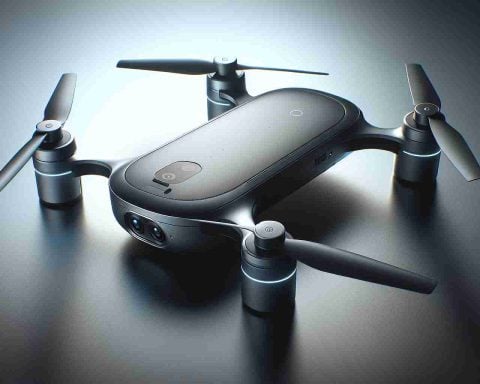In a groundbreaking display, China has successfully launched its cutting-edge hypersonic drone, the MD-22. This revolutionary aircraft has captivated the global defense community with its stunning capabilities. Boasting an impressive operational range of 4,971 miles and capable of carrying payloads up to 1,323 pounds, the MD-22 is being hailed as a formidable strike asset.
Next-Level Versatility
The MD-22 isn’t your typical drone—its advanced propulsion allows it to achieve staggering speeds of Mach 7. A unique feature of this hypersonic marvel is its launch flexibility; it can be deployed from high-altitude platforms, including balloons and other reconnaissance aircraft, to maximize its range and evasive capabilities, ensuring both strategic advantage and operational longevity in hostile environments.
Global Hypersonic Race
While China makes strides with the MD-22, the United States is not far behind. The American initiative to develop hypersonic technology is epitomized by their own drone project, the X-51A Waverider. This competitive technological race underscores the ongoing global endeavor to master hypersonic travel, a pursuit with significant implications for future military capabilities.
Challenges in Cutting-Edge Aviation
Developers acknowledge that despite extensive ground tests, real-world flight can expose unforeseen challenges. The complex flight trajectory—combining dives, ascensions, and returns—adds layers of complication, contributing to both the intrigue and the unpredictability inherent in deploying such advanced aerial technology.
By marrying sheer speed with versatile deployment, the MD-22 positions China at the forefront of modern aerial warfare capabilities. As nations around the world observe these developments, the race to dominate the skies continues.
Hypersonic Warfare: The Pros, Cons, and Future Implications of China’s MD-22 Drone
The recent successful launch of China’s hypersonic drone, the MD-22, has ushered in a new era of aerial warfare. This revolutionary aircraft, with its groundbreaking technology, has not only impressed with its specifications but also spurred discussions around its broader implications for global security dynamics and technological advancement.
Pros and Cons of Hypersonic Drones
Hypersonic drones, like the MD-22, offer numerous advantages over traditional drones and even manned aircraft:
– Pros:
– Speed and Evasion: Operating at speeds up to Mach 7, hypersonic drones can evade most current defense systems, making them nearly impervious to interception.
– Extended Range: The MD-22 boasts an operational range of 4,971 miles, allowing it to cover vast distances and reach targets far from its launch site.
– Flexible Deployment: The ability to launch from various high-altitude platforms makes hypersonic drones extremely versatile in different combat scenarios.
– Cons:
– High Costs: The technological sophistication required for hypersonic speed translates to higher production and operational costs.
– Technical Challenges: The extreme speeds involved present challenges in materials science and flight control, requiring substantial research and development investments.
Security Implications and Global Trends
As the MD-22 positions China at the forefront of hypersonic capabilities, the global security landscape is faced with both opportunities and challenges:
– Strategic Shifts: With the advent of hypersonic drones, the balance of military power may shift, potentially leading to new alliances and defense strategies.
– Technological Race: Countries, including the United States with its X-51A Waverider, are investing heavily in hypersonic technology, marking a new phase in the global arms race.
Predictions and Future Innovations
The rise of hypersonic drones is expected to drive further innovations and advancements in aerospace technology:
– Enhanced Materials: Future hypersonic vehicles may benefit from advancements in nanomaterials and composites, improving durability and performance.
– AI and Automation: Incorporating artificial intelligence could lead to smarter navigation systems, offering enhanced autonomy and accuracy.
In conclusion, the launch of the MD-22 represents a significant leap forward in military technology. As nations continue to vie for dominance in hypersonic travel, understanding the capabilities, limitations, and strategic implications of such technology will be crucial.
For more insights into hypersonic technology and its impact on global security, visit Defense.gov.














